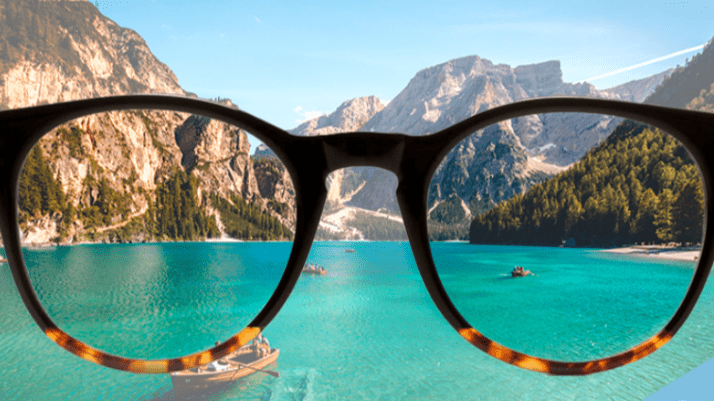
[adinserter block=”3″]
Sunglasses with polarized lenses are eyewear designed to reduce reflected glare from surfaces like water, snow, and glass. Sunglasses with polarization might be beneficial when you need to see clearly and stay safe.
Contrary to popular belief, polarized lenses do not shield users from the sun’s ultraviolet (UV) rays. Lenses can be polarized on both prescription and non-prescription frames. This article covers the use of polarized sunglasses. The advantages and disadvantages of this kind of protective eyewear are also listed.
What is the use of polarized sunglasses?
With the help of polarized sunglasses, you can see clearly in circumstances where you may normally have to squint or risk being blinded by reflected light.
Light beams are horizontally distributed and produce glare when they strike a reflecting horizontal surface. Photoreceptors in the eyes, such as rods that help you see in low light and cones that help you perceive color, may get overloaded.
Glare significantly impacts vision, making it difficult to discern colors and perhaps “whiting out” your vision completely. Your body’s natural reaction to this is to squint to protect the rods and cones from harm caused by too much light.
Polarized lenses combat glare by adding a specific chemical to the lenses in a vertical pattern. The chemical application’s vertical orientation obstructs the horizontal light.
For less expensive sunglasses, this chemical procedure can be applied solely to the surface of the lenses, or for more expensive sunglasses, it can be sandwiched between two layers of lens material. The lenses of a high-quality pair of sunglasses almost always have polarization.
Also, Read Types of Contact Lenses in India
What advantages do polarized sunglasses offer?
Unfiltered UV light from the sun, which can harm the eyes, is not blocked by polarized lenses. They are intended to reduce glare, both during the day and at night.
Lens polarization has advantages since it:
-
Increases the comfort of your vision.
-
The contrast between light and dark is sharpened.
-
Give you access to the genuine hues.
-
Reduces eye fatigue and strain.
Polarized lenses come in a wide range of colors, from extremely dark hues to extremely light colors. It is not true that lenses are “better” or “worse” at preventing glare based on their hue or degree of blackness. Both are equally capable of working.
Some hues are more advantageous in some circumstances. For instance:
-
A conventional dark lens may be the best option for a sunny lakeside day.
-
For those who spend extended periods in front of a computer, a light blue lens helps ease eye strain.
-
Eyewear made specifically for nighttime driving occasionally has yellow or light orange lenses.
No clear polarized lenses exist because of the chemical procedure used to create them. Even if the shade is light, there is always some tinting.
Also, Read Around 800,000 People Are Using Contact Lenses. What Are The Side Effects of Wearing Contact Lens?
What is the best time for polarized sunglasses?
Glare can be hazardous, particularly when driving since it distorts objects’ true colors and makes them more difficult to see. Numerous pedestrian fatalities and traffic incidents have been associated with glare.
In circumstances like these, polarized sunglasses can be extremely useful:
-
Driving: This is particularly true on exceptionally hot days when a mirrored effect is created by the combination of hot air near a road’s surface and less hot air above it.
-
Outdoor sports: Polarized sunglasses give athletes clearer vision so they can move around more safely while competing in broad daylight.
-
Water events: This includes sailing, fishing, and other water sports where glare can occur from all angles due to sunlight reflecting off of moving water or waves.
What drawbacks do polarized sunglasses have?
Some people should not wear polarized lenses. They may be less helpful than troublesome in the following three situations:
-
Visual disorientation: When looking through polarized lenses, especially in typical light levels, some people experience vertigo or visual disorientation. Some claim that the glasses make things appear “more 3-D,” possibly affecting one’s ability to perceive depth.
-
Interface blurring: Horizontal light blockage can also give the appearance of blurriness to liquid crystal displays (LCDs) and other digital interfaces. This is due to the directional light-modulating abilities of these technologies.
-
Driving at night: Polarized glasses are available. However, they have a dimming effect because they block some light from reaching the eye. Even more than the glare from oncoming cars, this can impair vision.
How are polarized lenses different from non-polarized lenses?
Light vibrates because it moves in waves. Light typically vibrates in several directions. However, light only vibrates in one direction when it bounces off a horizontal surface, such as snow, water, or the roof of a car. We refer to this process as polarization.
The light is focused and strikes the eye directly since it only vibrates in one direction. This focused light is referred to as “glare.” The way polarized and non-polarized lenses deal with glare differs.
1. Non-polarized lenses-
Sunglasses without polarization are made to lessen the brightness of all lights. If your lenses claim to provide UV protection, they may contain unique dyes and pigments that obstruct ultraviolet radiation from entering your eyes.
However, regardless of the light’s direction, this technology operates similarly for all sunlight. Because of this, glare will continue to influence your vision more than other types of light.
2. Polarized lenses-
A chemical is applied to polarized lenses to block light. However, because the filter is applied vertically, only light that is traveling vertically can pass through.
Consider a picket fence with an inch between each slat as an example. Slipping a popsicle stick between the slats would be simple if you hold a popsicle stick vertically. However, if you turn it horizontally, the popsicle stick won’t fit between the fence slats.
The basic concept behind polarized lenses is that. A small amount of vertical light can pass through the filter, but glare or horizontal light cannot.
Also, read about 5 Proven Ways to Take Care of Eyes: For All-Day Computer Users
Is it better for my eyes to wear polarized lenses?
Your eyes won’t be protected from UV rays anymore by polarized lenses than by normal 100% UV lenses. Nevertheless, they can improve your vision and reduce some eye strain. Consider purchasing polarized sunglasses if you frequently squint, even when wearing sunglasses. They are a more cozy choice.
Keep in mind to shield your eyes from UV rays at all times. Wear sunglasses wherever you go outside in the sun, and be sure they provide 100% UV protection.
Are there instances where non-polarized lenses work better than polarized lenses?
Yes. Pilots are not permitted to wear polarized sunglasses because they would impair their ability to see the instruments and screens on the plane’s instrument panel. Polarized sunglasses make it harder to see LCD screens and LED lights. Non-polarized lenses are preferable for any activity requiring a lot of screen time. Blue light exposure for extended periods might cause eye strain and weariness.
For low light and nighttime circumstances, non-polarized lenses are preferable since they offer definition and clarity without distorting your vision. Night-driving and low-light glasses have non-polarized lenses that improve clarity and definition in low-light or nighttime circumstances while also reducing glare from approaching headlights or LED signage.
Conclusion-
Sunglasses with polarization are made to lessen glare from light that reflects off horizontal surfaces. Vertically oriented chemical procedures are used to create the lenses. When you are driving, boating, or engaging in sports, polarized lenses can help with glare reduction and improve color perception. Certain circumstances don’t call for polarized lenses. The lenses produce fading and blurring when using LCD gadgets or while driving at night.
Related read Symptoms, Causes, and Treatment of Dry eye
[adinserter block=”3″]
Credit : Source Post






